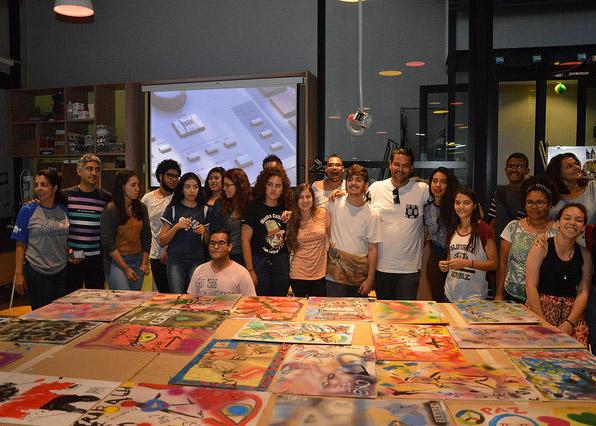
In June, the Casa Thomas Jefferson Makerspace went on a mission: to provide the local community of artists, teachers, and students an immersive, hands-on experience on the work of the astonishing American artist Jean Michel Basquiat (1960-1988). The team was looking for engaging ways that a makerspace could convey the relevance of the artist’s work and the historical/cultural context in which he emerged in way that would make people eager to learn and express themselves.
The best way to start was to find the right partner: Pedro “Gurulino” Sangeon, a prominent local artist, who not only took the lead in the delivery but also helped in the planning of the creative activities. The result was a mix of sensory experiences specially designed to immerse participants in the impressive work of Basquiat, and depart from the preconceived stereotyped notion of beauty. In the end, enthralled participants created their own pieces of art using a variety of techniques inspired by the “King of Remix” style.
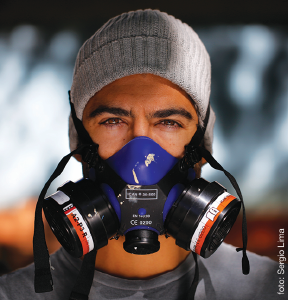 Pedro Sangeon | www.gurulino.com (Foto: Sergio Lima)
Pedro Sangeon | www.gurulino.com (Foto: Sergio Lima)The workshops took place in the context of Basquiat’s Exhibit about the artist being held in Centro Cultural Banco do Brasil (CCBB) from April 21st, 2018 to July 1st, 2018. In close collaboration with the American Embassy, Casa Thomas Jefferson offered two sessions of this one-day program. The first one targeted local artists, art students and professors, and the community. The second round was specially tailored for public school teachers and students at CIL.
Gurulino art is displayed all over Brasilia and bears a resemblance to Basquiat’s work for his use of poetry, graffiti, and varied techniques. Guru, as his numbered followers call him, started the workshop telling participants a little about his own experience as an artist. Just like Basquiat, Gurulino is not a so called grafiteiro, he is an artist who attended art school, but uses spray paint to convey his thoughts, provoke, and question the reality we face in big cities daily. In his opening talk, Guru spoke about how Basquiat’s work is misleadingly perceived as that of an “unstudied” artist and how Basquiat very skillfully and purposefully brought together a range of disparate traditions, practices, and styles to create a unique kind of visual collage.
The workshops were designed to help students stay focused as the instruction progressed. The first task was to put together a laser cut puzzle. After sharing what the painting “Boneless” made them feel, participants turned it over to discover that the puzzle was also a board map of the workshop journey. Participants were engaged in constructing knowledge together as they collaboratively accomplished tasks to unlock the ‘rooms’.
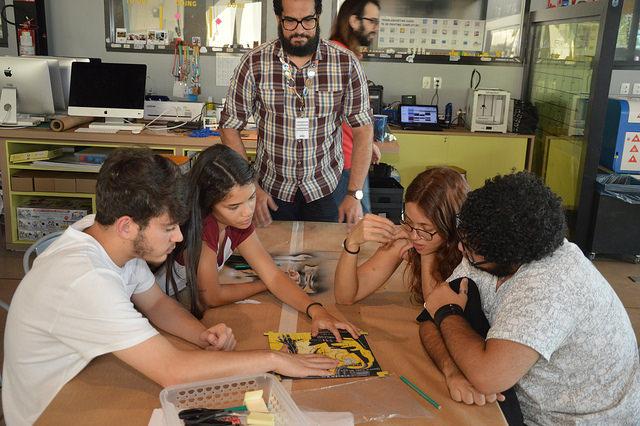
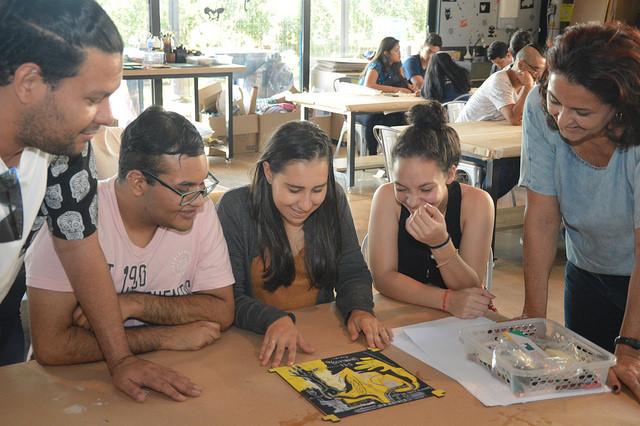
Participants took a virtual trip to Brooklyn in the eighties and explored media rich content (video, text, pictures) to start their learning journey. They were motivated to summarize what they were learning in their own words. Then, we used Kahoot, a simple “drill and practice” piece of software, to wrap up this immersive trip into Basquiat’s universe. To keep participants engaged and active, before providing the answers, participants were supposed to discuss in groups and spot the information within the materials in the virtual trip.
Participants took a virtual trip to Brooklyn in the eighties and explored media rich content (video, text, pictures) to start their learning journey. They were motivated to summarize what they were learning in their own words. Then, we used Kahoot, a simple “drill and practice” piece of software, to wrap up this immersive trip into Basquiat’s universe. To keep participants engaged and active, before providing the answers, participants were supposed to discuss in groups and spot the information within the materials in the virtual trip.
https://livetour.istaging.com/38a8e2b4-edb2-4387-a58d-9835c570ed82
https://livetour.istaging.com/a897c20a-b428-4a8a-a729-ddcbe56057d2
https://livetour.istaging.com/38a8e2b4-edb2-4387-a58d-9835c570ed82
When the first room was unlocked, Guru started a series of exercises aimed at warming up participants and shifting from an I-CANNOT-DRAW state of mind to an I-CAN-DO-IT attitude.
At this point in the workshop, more familiar with Basquiat’s trajectory, participants received part of a skeleton to put together and customize. Each group received different types of art supplies that Basquiat used in his work to experiment with.
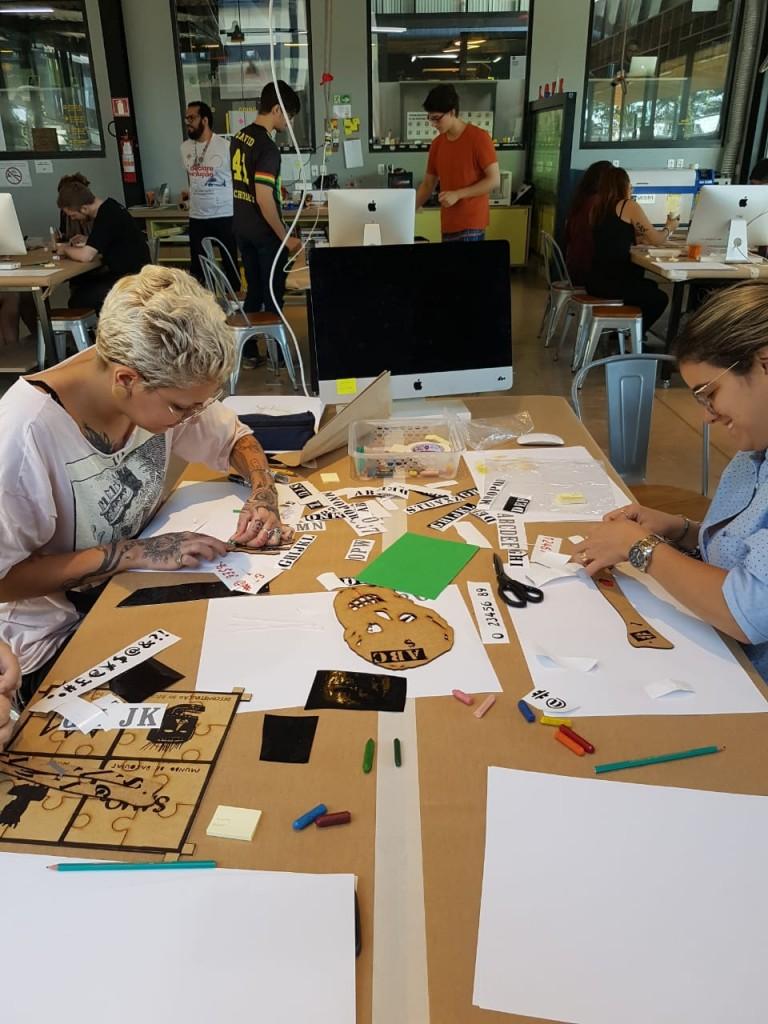
Unlocking the second room was once more a collaborative experience. Participants put all parts of the human skeleton together and revisited Basquiat’s work in which he used human anatomy to convey his ideas.
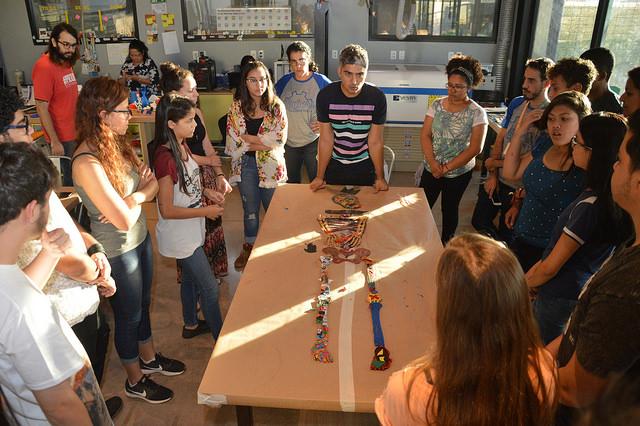
In the third room, participants got famous portraits and had to reassemble them in unique ways. The idea here was to question our preconceived idea of beauty. Guru also talked about the tendency of looking at art and stating likes and dislikes. According to him, this is not the approach one should take. Instead, we should build empathy and understand the artist’s pain and ideas behind the painting.
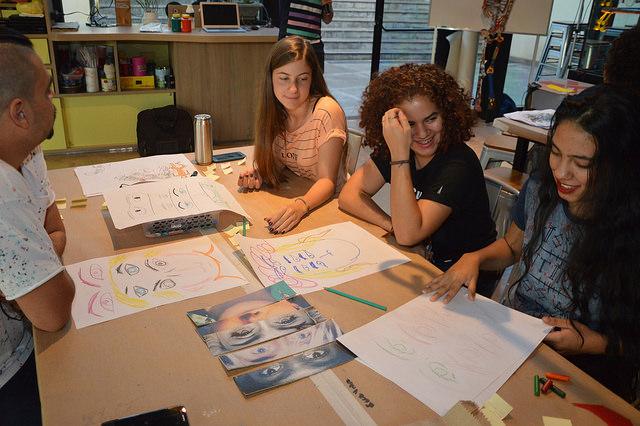
In the fourth room, participants had the opportunity to apply the techniques they learned, the knowledge they co-constructed and the materials available to express themselves. Surrounded by Basquiat’s paintings, the skeleton, their own drawings, and words they wrote down whenever they heard a bell, participants were ready to create their own Basquiat-inspired work of art. Moved by the artist’s roots and struggles, Guru invited participants to express their own ideas, fears, and desires.
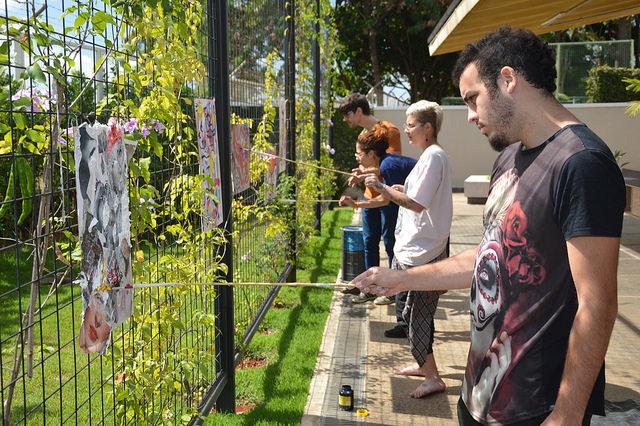
Specially designed to engage, the workshop got extremely positive feedback and made it clear to everyone involved that makerspaces are a wonderful platform to co-design unique learning experiences.
Sarah - Maker, 3/Set/2024